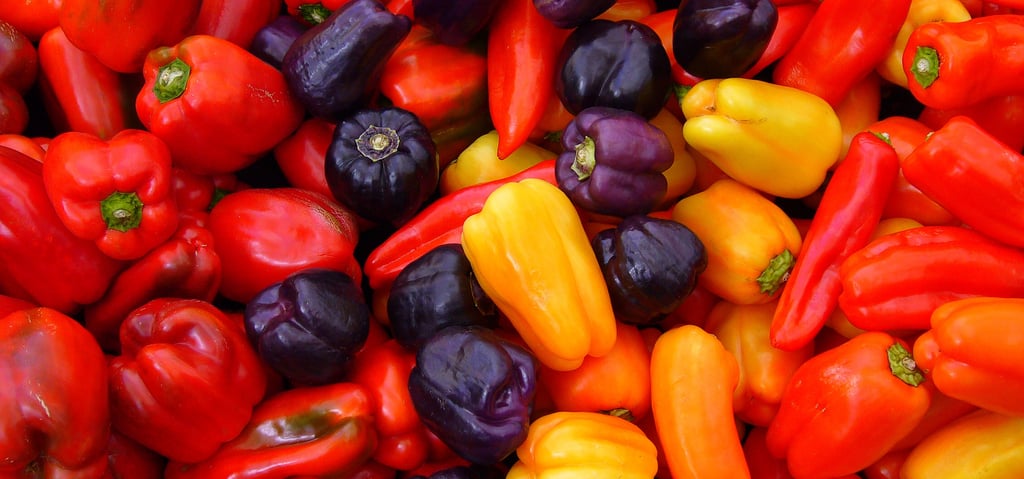Unlocking the Flavorful Mystery: What Is Capsicum?
Capsicum | Pepper | Solanaceae
Sammy Yepes
10/2/20232 min read


When you sauté colorful bell peppers in your favorite stir-fry or savor a spicy chili pepper in your salsa, you're enjoying the vibrant flavors of capsicum. Capsicum is a versatile and widely used vegetable in cuisines around the world. In this blog, we'll explore the intriguing world of capsicum, including its origins, varieties, culinary uses, and its potential health benefits.
The Basics of Capsicum
Capsicum, often referred to as "peppers," is a genus of flowering plants in the nightshade family, Solanaceae. These plants are native to the Americas, with their cultivation dating back thousands of years. Capsicum plants produce fruits that are commonly consumed as vegetables and vary significantly in taste and heat levels.
Varieties of Capsicum
Capsicum encompasses a wide range of pepper varieties, each with distinct characteristics. Here are some of the most well-known ones:
1. Bell Peppers: Bell peppers are known for their sweet, mild flavor and come in various colors, including green, red, yellow, and orange. They are commonly used in salads, stir-fries, and stuffed dishes.
2. Chili Peppers: Chili peppers, such as jalapeños, habaneros, and serranos, are famous for their spicy heat. They add a fiery kick to dishes and are used in salsas, hot sauces, and various cuisines around the world.
3. Pimento Peppers: Pimento peppers are small, red, heart-shaped peppers with a sweet and slightly tangy flavor. They are often used in dishes like pimento cheese and stuffed olives.
4. Cayenne Peppers: Cayenne peppers are long and slender, with a moderate level of spiciness. Ground cayenne pepper is a common spice used to add heat to dishes.
5. Paprika Peppers: Paprika peppers come in various forms, including sweet, hot, and smoked. They are often dried and ground into a spice known as paprika, used for flavoring and garnishing dishes.
Culinary Uses of Capsicum
Capsicum peppers are incredibly versatile in the kitchen and can be used in a variety of ways:
1. Fresh: Fresh capsicum peppers can be eaten raw in salads or as crunchy snacks. They are also commonly used in stir-fries, fajitas, and kebabs.
2. Cooked: Capsicum peppers add depth and color to cooked dishes. They are often sautéed, roasted, or stuffed with a mixture of ingredients like rice, meat, and herbs.
3. Dried and Ground: Dried capsicum peppers can be ground into spice powders like paprika, cayenne pepper, and chili powder, which are used to season a wide range of dishes.
4. Pickled: Capsicum peppers can be pickled to preserve their flavor and used as a condiment or ingredient in sandwiches and salads.
Potential Health Benefits
Capsicum peppers are not only delicious but also offer potential health benefits:
1. Rich in Vitamins: Capsicum peppers are a good source of vitamins C and A, which are important for immune function and healthy skin.
2. Antioxidant Properties: They contain antioxidants, including capsaicin, which may help protect cells from damage caused by free radicals.
3. Weight Management: Capsaicin, found in hot peppers, may aid in weight management by increasing metabolism and reducing appetite.
4. Cardiovascular Health: Some studies suggest that capsicum consumption may help lower blood pressure and cholesterol levels, benefiting heart health.
Conclusion
Capsicum, the diverse and flavorful genus of peppers, has found its way into kitchens and cuisines worldwide. From sweet bell peppers to spicy chili peppers, these vegetables add taste, color, and versatility to a wide range of dishes. Beyond their culinary appeal, capsicum peppers offer potential health benefits, making them a valuable addition to a balanced diet. So, the next time you enjoy the zesty crunch of a bell pepper or savor the heat of a chili pepper, you'll have a deeper appreciation for the world of capsicum.


